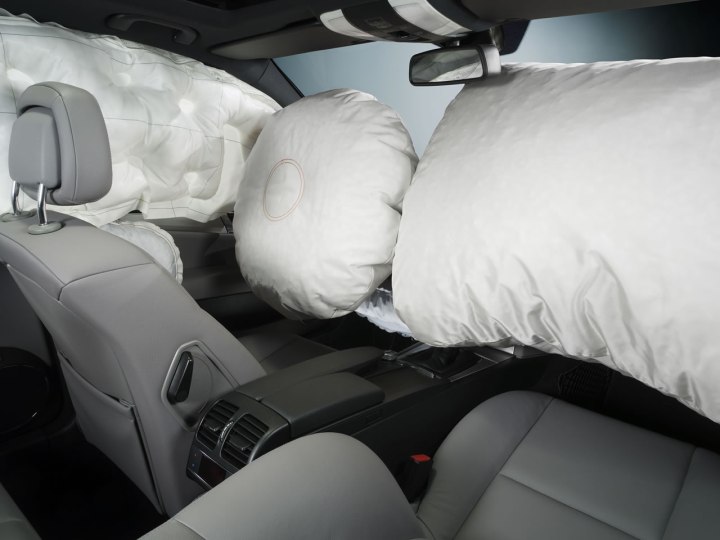
The National Highway Traffic Safety Administration announced an additional 35-40 million Takata airbag inflators are being recalled. This is in addition to the 28.8 million recalled in 2015 and earlier this year. If you own a vehicle in the U.S. built in 2002 or later, there’s a good chance it’s on the list.
The problem is with the airbag inflator, not the airbag itself. According to NHTSA administrator Mark Rosekind, the ammonium nitrate explosive propellant in the inflators can degrade over time. As a result, when the airbag inflates, it can burn too quickly, explode with too much force, and send shrapnel through the airbag and into passengers. The propellant mixture does not have a drying agent or desiccant, which apparently could have prevented the problem. The passage of time, moisture, and high temperatures can contribute to the degradation. Earlier, it was thought that the problem was limited only to hotter, more humid states, but after more research and subsequent reports of problems, the recall was been extended nationwide.
There have been more than 10 deaths and at least 100 injuries due to the inflator problem, according to Consumer Reports. The NHSTA has issued the recall remedy in five stages, in decreasing threat levels. NHTSA’s Rosekind stated, “NHTSA’s aggressive actions in 2015 means this recall is already a year ahead of where it would have been if the agency had waited for this research. As a result, all of the most dangerous inflators responsible for the deaths and injuries are already under recall.”
The total number of recalls, now at 65-70 million inflators, does not mean that many cars and trucks. Many of the recalled vehicles have more than one inflator. Even if you cut the number in half, however, it’s still more than 30 million vehicles. As of April 22, a total of 8,168,860 recalled vehicles had been repaired.
You can check to see if your car or truck is part of the recall by going to the NHTSA SaferCar site. You can look up your vehicle by year, make, and model or, more specifically, by VIN number. I checked my 4Runner at the SaferCar site and found it was already subject to the earlier recall in February for side curtain airbags. I don’t know if it will be expanded to the front driver and passenger airbags, but will check back later to see.
You can’t just drive to a dealer and ask for the fix. As the recall goes out to manufacturers, they have to figure out how they’ll fix it and where to get the correct replacement parts. The notice on the recall for my car read, “Toyota is currently preparing the remedy. Toyota currently anticipates the remedy to be available in September, 2016. The remedy will consist of the replacement of the airbag control module.”
Since I live in North Carolina, a fairly hot state, I think I’ll leave the windows open when I park in the garag. Maybe that will prevent some heat buildup.



